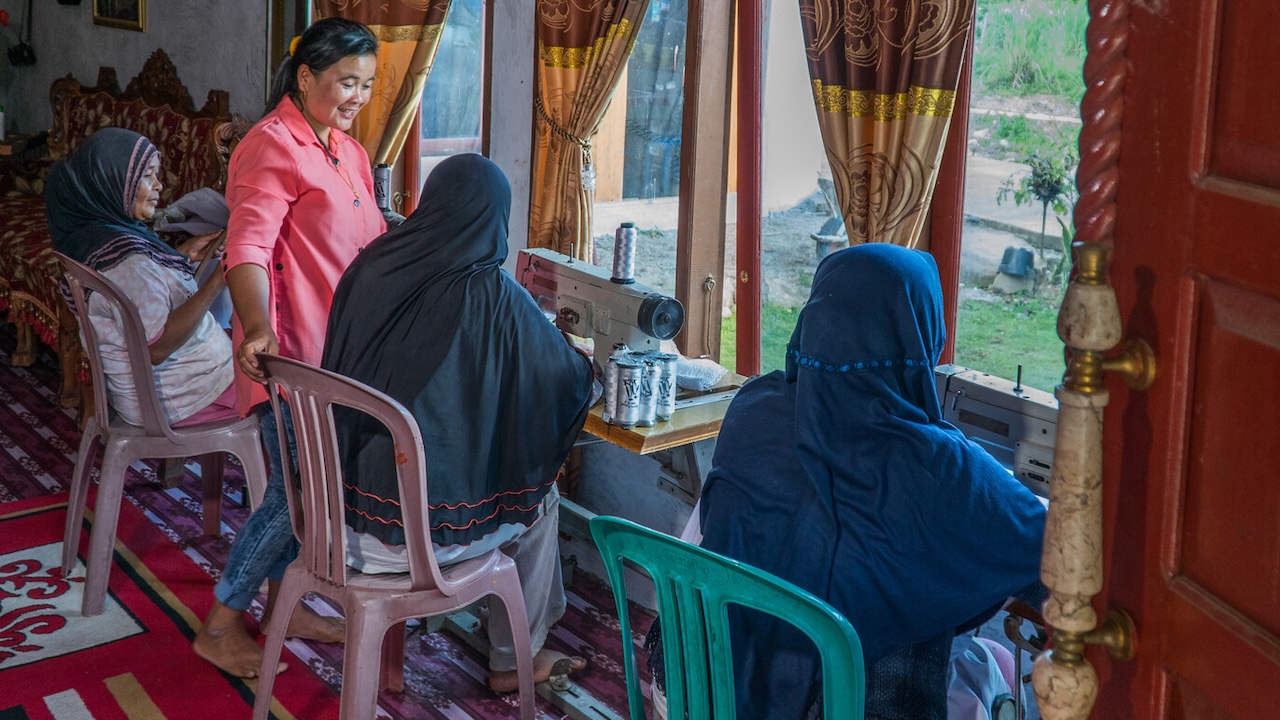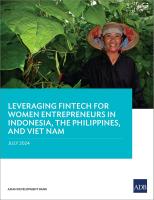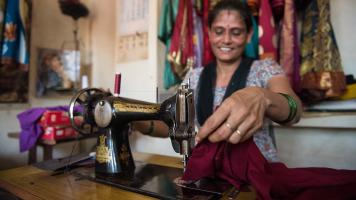
Research shows women-owned enterprises are less likely to adopt new technologies and digital platforms.
While some progress has been made in closing social disparities across the globe, women still have unequal access to opportunities and resources compared to men.
Financial innovations driven by digital technology may be the key to unlocking women’s full economic potential. Research shows fintech startups are leading the way in providing women entrepreneurs accessible, affordable, and convenient financial services.
While some progress has been made in closing social disparities across the globe, women still have unequal access to opportunities and resources compared to men. In the world of business, it is more challenging for a woman to get a loan because she has no or fewer assets to use as collateral or lack the documents required by banks.
Before the COVID-19 pandemic, the SME Finance Forum estimated the finance gap for women-owned small and medium-sized enterprises (SMEs) at $1.5 trillion or 33% of the total finance gap for SMEs. In ASEAN countries, only a small percentage of businesses owned by women were able to access financing—5% to 6% of microenterprises, 12% to 15% of small enterprises, and 17% to 21% of medium-sized businesses.
There are more than 60 million women across Southeast Asia who run MSMEs. Studies conducted by ADB show at least four ways fintech can help women entrepreneurs overcome barriers to financing.
1. Makes financial products and services more accessible even in areas that lack financial infrastructure.
Applications, such as digital wallets and mobile banking, and fintech business models, such as peer-to-peer lending platforms and digital banks, provide convenient and easy-to-access services that meet the financial needs of women.
Digital finance does not require users to have an account at a bank with a physical branch. It also allows financial transactions to be conducted at any time and from any location. This enhances the financial autonomy of women, enabling them to “overcome time and mobility constraints while improving privacy, confidence, and control over their finances.”
Fintechs are operating with increasing efficiency and usually offer a more customer-friendly experience than traditional banks, which are constrained by existing legacy systems and cultures.
2. Offers quick access to affordable and even collateral-free loans.
Fintechs and digital banks do not need physical branches and have streamlined operations, which means they have low overhead costs and can provide better rates.
Women are often in businesses with thin profit margins (e.g., small grocery or convenience store) and must balance work and care duties so saving money and time are critical to them.
A study of fintech sectors in Indonesia, the Philippines and Viet Nam shows co-lending initiatives between fintech and banks in particular are able to tailor their products and services to the needs of this underserved market. Examples are the partnership between AMAAN and Bank Jago in Indonesia, which offers digital banking, and KiotViet in Viet Nam, which has partnered with several banks. AMAAN is a fintech focusing on women microentrepreneurs. KiotViet is a fintech that provides cloud-based services.
Peer-to-peer (P2P) platforms usually have higher interest rates with shorter repayment periods because they cater to borrowers who struggle to get loans. However, MSME customers prefer to go to them because they get access to funds quickly without providing collateral.
P2P lenders in Southeast Asia include Amartha in Indonesia, which caters to women; Blend.ph in the Philippines, an online marketplace that matches those seeking funds with financial institutions and investors; and Validus in Viet Nam, an online unsecured lending platform for SMEs.
3. Simplifies loan management processes.
Fintech uses technology to automate and simplify processes. User-friendly digital applications enable customers to access financial products and services seamlessly and conveniently. Less documentation and in-person interactions are required, leading to faster loan processing and transactions. This makes it easier for those who lack financial literacy and the time to apply for loans.
In the Philippines, mobile wallet GCash offers different types of loan products through the app. GCredit requires no documents to access a revolving credit line of up to Php50,000 (about $900). GGives is a buy-now-pay-later service that offers light and flexible repayment options. GLoan can also be accessed via the app without the need for extensive credit history, collateral, or excessive paperwork. The amount users can borrow is based on their GCash transactions. Women make up 55% of the 94 million GCash users nationwide. Two in three of the more than 3.9 million borrowers on GCash are women.
4. Uses alternative credit scoring systems to evaluate potential borrowers.
Fintechs look at digital footprints and alternative transaction histories to find out potential capacity and willingness to repay.
Traditional banks consider MSMEs as high risk because they lack financial statements and proof of business to show financial viability. Since they cannot accurately evaluate credit worthiness, banks demand significant amounts of collateral.
Fintech lenders use data, such as online purchases, bills payment, and mobile wallet transactions, in lieu of credit history. By borrowing from fintechs, MSMEs can start building their credit history, which they can use later when applying for loans with better terms. The ADB study cites UnionBank’s SeekCap marketplace in the Philippines, which has “lenders with different risk appetites to cater to MSMEs with various credit scores. On building a credit history in the marketplace, MSMEs can try to graduate to lower-cost lenders.”
Overcoming obstacles
Research shows that the number of women who own a mobile phone and use mobile internet is increasing in Southeast Asia, with Thailand and Viet Nam reaching 90% mobile penetration in 2018. However, there are still more men than women who own a mobile phone and engage in digital activities in the region.
Likewise, women-owned enterprises are less likely to adopt new technologies and digital platforms. To improve women’s access to fintech products and services, there is a need to improve their financial literacy and build their understanding of digital solutions, such as mobile wallets and digital banking.
Some fintechs have integrated financial and digital literacy services and other nonfinancial services into basic client support. These include providing advice and mentoring and facilitating access to digital tools and apps for networking and business management.
In Indonesia, KoinWorks, an MSME-focused neobank (a type of digital-only bank), offers a learning platform in its app for financial literacy and organizes in-person financial literacy events. UNO Digital Bank of the Philippines has partnered with Singapore-based Proxtera to train Filipino MSMEs and provide them with digital financial literacy skills. Completing the course comes with a bank account and better interest rates.
ADB launched the Women's Finance Exchange with the support of the Women Entrepreneurs Finance Initiative (We-Fi) in 2021. The online platform provides digital solutions to financial institutions and women-owned businesses. It has provided trainings on financial management, technology and digital tools, and e-commerce as well as mentorship and networking opportunities for women entrepreneurs.

